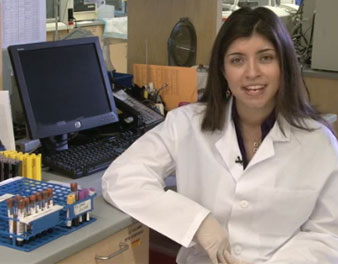The purpose of this lesson is to teach students about blood and its components while instilling an appreciation of its importance for survival. The lesson takes a step-by-step approach to determining the "recipe" for blood while introducing students to important laboratory techniques like centrifugation and microscopy, as well as some diseases of cell types found in blood. It also highlights the importance of donating blood by explaining basic physiological concepts and the blood donation procedure. There are no formal prerequisites, but students should be comfortable with converting weight units. The only materials needed are a calculator and paper, and it would be helpful to print the downloadable color PDF files of blood smear images. During the breaks, students are asked to estimate and then calculate the amount of blood in their body, identify cell types in a blood smear, and discuss the composition of blood with their neighbor. The lesson can be completed within a 50-minute class session.

